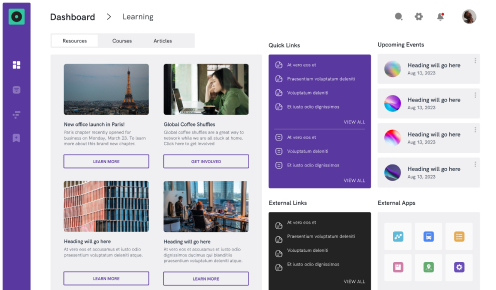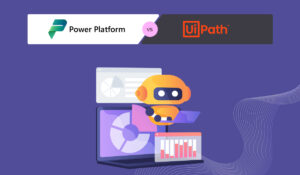Not Disruption, but Symphony – Here is How You Can Orchestrate a Seamless Transition to Intelligent Automation
 By Apratim Ghosh
By Apratim Ghosh
 10th May, 2024
10th May, 2024
business process management
Robotic Process Automation
Artificial Intelligence
intelligent automation
Businesses across sectors have long been leveraging technologies like automation to enhance workforce productivity, improve system efficiency, and drive better business results. Yet, when it comes to accelerating the decision-making process, many hit a roadblock. Given the sheer pace of change, making quick and effective decisions requires organizations to look beyond automation and open doors to the world of intelligent automation.
Read on to explore the need for and benefits of intelligent automation and the steps you must take to orchestrate a seamless transition to intelligent automation.
The Need for Intelligent Automation
Intelligent automation, also called cognitive automation, leverages automation technologies such as business process management (BPM) and robotic process automation (RPA), along with artificial intelligence (AI), to accelerate and scale decision-making across the organization. By automating repetitive and time-consuming tasks, rapidly processing information, and quickly identifying patterns in data, human resources can focus more time on strategic tasks at hand.
Through automated analysis of large volumes of data, intelligent automation simplifies processes, leading to:
- Improved productivity: Intelligent automation reduces the cognitive load on humans, leading to better productivity and quicker decision-making. For instance, manufacturing firms facing challenges in managing purchase requisitions can leverage intelligent automation to automate the approval process. This can help minimize the number of people required for the process while also automating the tracking of different requests – thus improving productivity and accelerating operations.
- Continuous improvement: With intelligent automation, humans can cut down on the many steps needed to accomplish certain tasks. Completing mundane and error-prone tasks for people and providing valuable insights to decision-makers, can help kick-start a continuous improvement cycle. For example, while onboarding new customers, teams can get intelligent insights on how they can speed up the onboarding process, thereby reducing the turnaround time. For example, healthcare organizations struggling to conduct health assessments and maintain accurate records of patients can embrace intelligent automation to expedite manual tasks, eliminate multiple steps involved in data management, and generate comprehensive medical reports.
- Reduced errors: Manually going through forms and entering data into systems is a highly time-consuming and error-prone process. Through the intelligent automation of data entry efforts that are most frequently erroneous, teams can prevent miscalculations and ensure the efficiency of processes. For example, HR teams dealing with goal management can use intelligent automation to overcome errors associated with manual goal-setting and tracking, address inconsistencies in operations, and receive automated notifications and reminders for goal updates.
- Optimized costs: Intelligent automation offers the ability to deal with exceptions and anomalies that might emerge in day-to-day operations – thus minimizing the impact and cost of damage. For instance, large MNCs can exploit the capabilities of intelligent automation to streamline license and compliance management, thus improving compliance with evolving regulations and curtailing the costs of non-compliance.
- Better customer satisfaction: Intelligent automation can also allow for better customer satisfaction. For example, suppliers dealing with assets via work order management can use intelligent automation to streamline workflows to reduce errors and manage work orders from creation to completion – leading to better customer satisfaction.
- Easier scalability: Using intelligent automation, manufacturers can more effectively predict and adjust production to respond to changes in supply and demand. For example, startups looking to enable peer-to-peer lending can use intelligent automation to automate the document validation process, pick the right investors based on their risk appetite, and seamlessly onboard more vendors as the business grows.
Roadblocks to Adopting Intelligent Automation
Despite the disruptive benefits of intelligent automation, enterprise-wide adoption comes with several challenges:
- Privacy concerns: One of the biggest roadblocks to intelligent automation adoption is around data privacy. Since intelligent automation algorithms often collect and analyze personal, financial, and demographic data, they raise several privacy concerns among individuals and regulatory bodies.
- Data quality issues: Intelligent automation solutions need highly accurate, consistent, and constantly updated data to work their charm. Poor data quality often dilutes intelligent automation efforts while leading to inaccurate and unfavorable results.
- Poor data governance: The lack of proper data governance also impedes intelligent automation while raising several ethical concerns. In the absence of a robust strategy, intelligent automation systems can act on inaccurate or biased data, snowballing to unfavorable and erroneous outcomes.
- Lack of skillsets: Successfully transitioning to intelligent automation requires the knowledge and efforts of skilled resources. Lack of appropriate talent often makes it difficult to maximize the ROI of intelligent automation.
- Workforce resistance: The adoption of intelligent automation is also often met with widespread employee resistance. The fear that AI technologies might displace human workers leads to limited acceptance and hence, restricted benefits.
- Change management: Bringing intelligent automation into the organization demands several changes to be made to existing processes. This requires strong change management policies to make changes to critical systems, maintain employee experiences, and minimize disruptions to ongoing operations,
Best Practices for Success
If you want to successfully transition from simple automation to intelligent automation, here are some things to keep in mind:
- Have clarity on intelligent automation objectives: Intelligent automation isn’t just about implementing a system and expecting transformative results. You must first have clarity on the goals you are trying to achieve through implementation. It can be anything from improving productivity to reducing errors, lowering costs, or more.
- Build a robust strategy: Once you know the goals you want to achieve, you must build your intelligent automation strategy. Make sure to link your strategy with larger business goals and get the necessary leadership support and funding for your project. Build a robust implementation roadmap and document important milestones, critical challenges, and expected results.
- Invest in the right skill sets: Investing in the right skill sets is a critical aspect of intelligent automation. You can either upskill your existing workforce on technologies like AI, machine learning, natural language processing, computer vision, etc., hire new resources with these skills, or engage with qualified vendors who can provide access to required talent on demand.
- Eliminate barriers to scalability: Eliminating roadblocks and inefficiencies that eat into profits is extremely important for intelligent automation success. Such elimination can help your intelligent automation project scale more efficiently.
- Reengineer existing processes: Integrating intelligent automation into the existing technology landscape requires sufficient reengineering and revamping of processes. Low-code and no-code solutions are great options to tweak current tools and processes or create new ones, thus ensuring a strong foundation for successful intelligent automation.
- Prepare and cleanse data: Intelligent automation systems need to be fed accurate and clean data, so they can make the right decisions. To ensure this, it is important to identify the most valuable data sources, aggregate, clean, and analyze various types of information, and feed them into automation models for improved analytics and maximum effectiveness.
- Ensure data governance: For intelligent automation systems to drive accurate, ethical, and unbiased decisions, a proper data governance strategy is extremely essential. Make sure to build a high-level governance plan and define goals to improve data quality, guide resource allocation, and enable greater return on investment.
- Train and educate: If you want to ensure your intelligent automation systems are used to their maximum efficiency, you must train and educate your employees. Training employees on how best to utilize these systems and addressing their concerns periodically is sure to enable long-term business benefits.
As artificial intelligence continues to seep across the business world, its significance in the realm of automation cannot be understated. Automation technologies like BPA and RPA, when combined with the power of AI, open doors to several transformative benefits. From improved productivity to quicker and more accurate decision-making, reduced errors to minimized costs, better customer experience to strong brand reputation and more – intelligent automation is the only way forward.
Create long-term business value and ensure symphony with InovarTech. Contact us to know more!




























